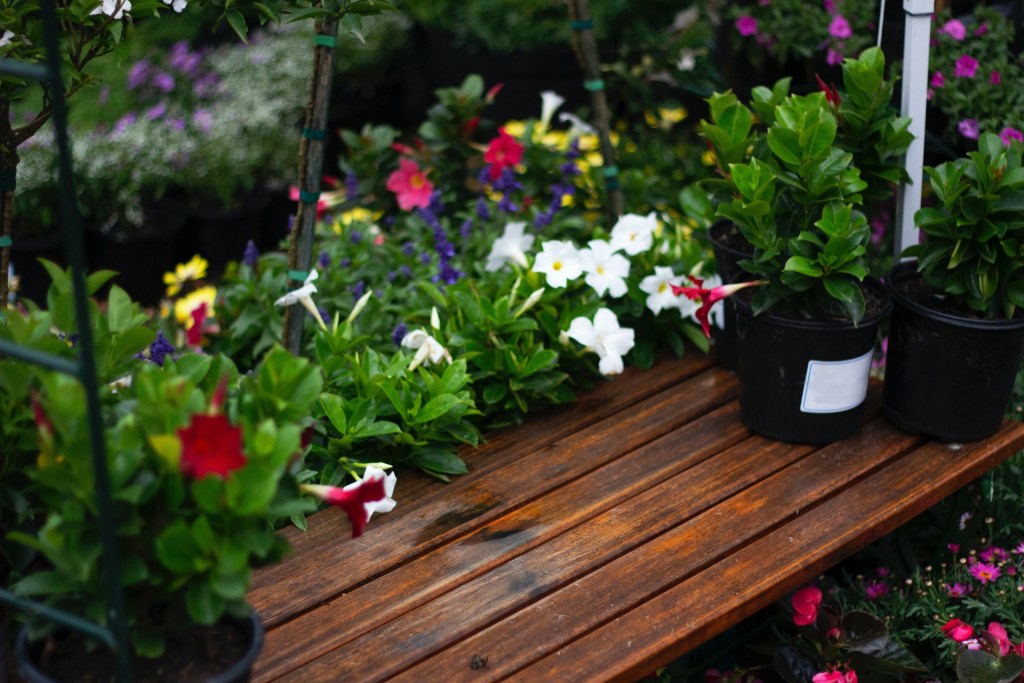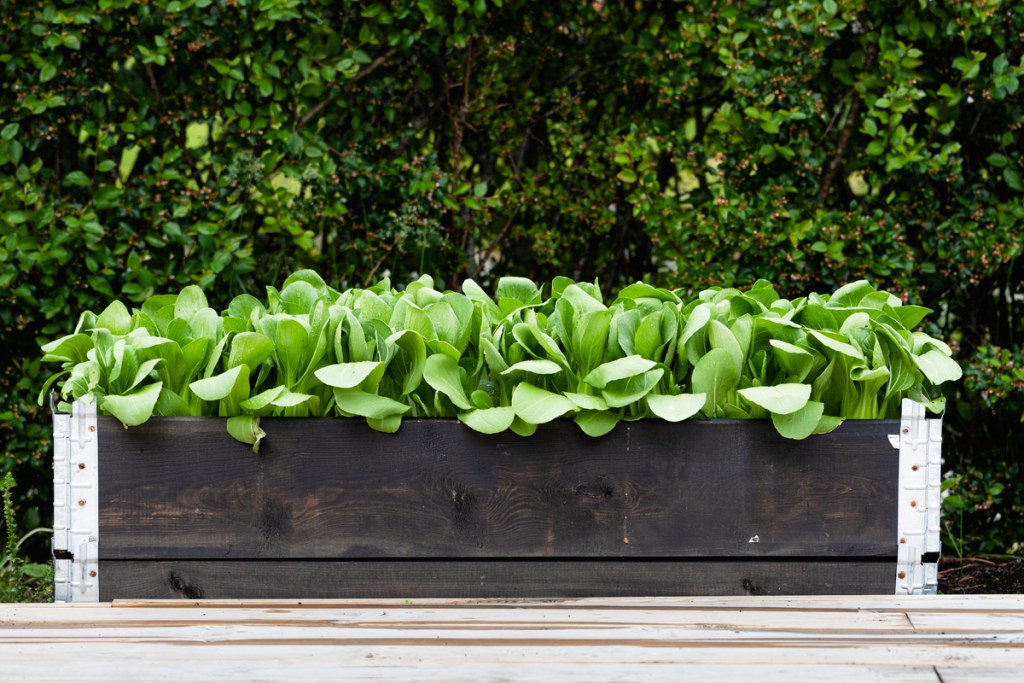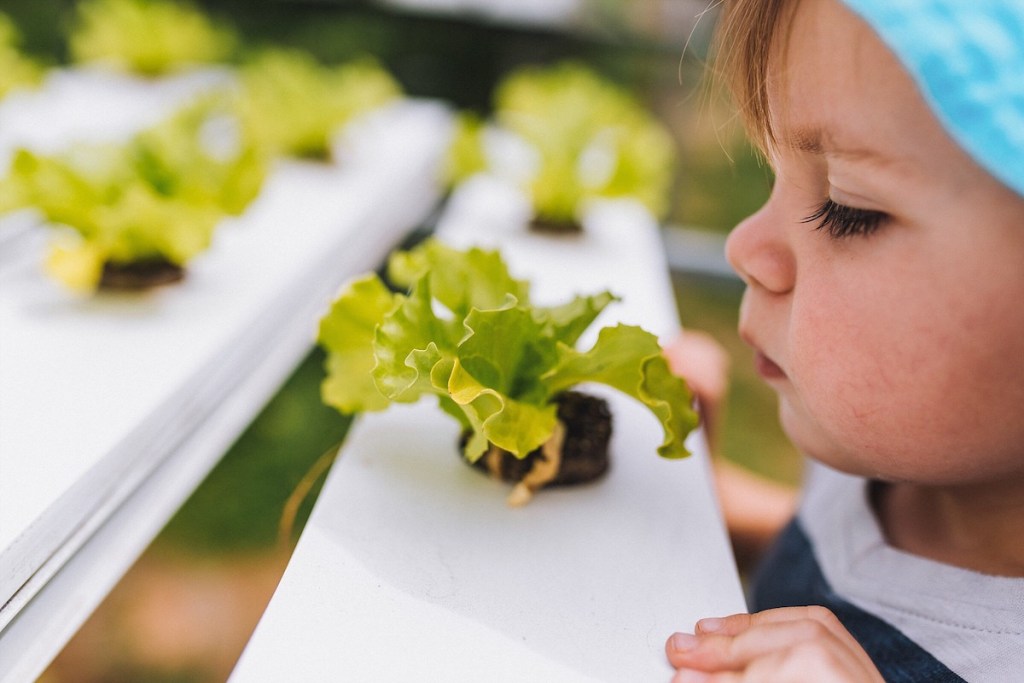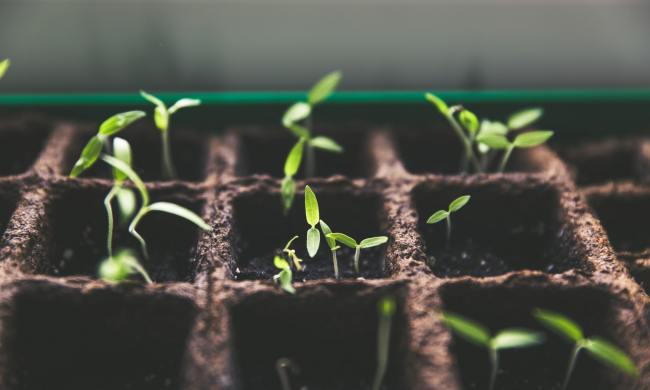Sometimes, creating an in-ground vegetable garden or a raised-bed garden is impossible. Thankfully, even if you live in a high-rise apartment, homegrown vegetables and herbs can be easily grown on a patio or deck. Tomatoes, potatoes, cucumbers, and other vegetables can be grown in large containers with minimal effort. Nothing tops the convenience of waking up in the morning and snipping off some herbs for your morning breakfast, either.
By following our tips and tricks, you can grow almost anything with a deck vegetable garden.

Reasons to grow vegetables on your patio or deck
There are many reasons to grow plants and vegetables on your deck or patio rather than in a garden:
- More light. Putting your plants on a patio or deck raises the elevation, meaning that even in a cloudy region, the plants will receive more sunlight compared to the ground. More light means the plants will grow better.
- Fewer weeds and bugs. When you raise your plants up by creating a deck garden, pests like slugs, snails, squirrels, and maybe even rats will have a harder time finding vegetables to eat. Also, the chances of weeds growing around your plants will be very low because potting soil is usually free of weed seeds. Don’t be surprised if a few end up in your pots because of the wind. Only a few things are certain in life: taxes, death, and weeds.
- Less water is used. While it is true that in the short term vegetables grown in a container need more water, it is easier to see how much water they need, which saves water in the long run.

How to create a deck vegetable garden
Buy proper containers
When it comes to creating a deck vegetable garden, the bigger the containers the better. Large containers will hold water for a longer time and allow the plants to create bigger and stronger root systems. If you are the crafty type, or just don’t want to spend a lot of money, you can recycle materials like wine boxes or food totes with holes drilled or cut in the bottom to use as containers. Whatever you use, make sure that the containers are food safe. If you want something fancier, consider cedar or fiberglass planters. These last for years, although they are more costly. Finally, while ceramic and terra-cotta planters are inexpensive and classic options, they dry out quickly and are prone to cracking in the winter.
Buy proper soil
Any potting soil at your local gardening store won’t work. Container gardens require a specially designed potting mix, specifically blended to hold water and be lightweight. Choose the highest-quality and organic potting mix. If you care about the environment, try to find a peat-moss-free mix as peat moss is a nonrenewable resource. After you plant your vegetables in the soil, add a sprinkle or slow-release organic fertilizer when you plant them then, every month, add liquid fertilizer designed for vegetables.
Protect your plants
The higher your vegetable garden, the more susceptible it is to the elements, such as rain, snow, wind, and high heat. However, you can take advantage of resources that are already around your deck such as roof overhangs, umbrellas, and railings to shade and protect your plants. Some planters can be moved so don’t be afraid to more your garden if need be. Pro-tip for upcycling: The plastic containers that commercial salad mixes come in are perfect for shielding plants.

Tips for growing your vegetables
- Do not overcrowd your vegetables. Whether you are growing plants in a lawn garden, inside an apartment, or on a deck, one of the most common reasons for plants dying is overcrowding. Planting vegetables close together leads to competition for resources and soil space which can cause tight roots.
- Don’t forget to water. This may seem like an obvious statement; plants need water, obviously! However, crops grown in containers need more frequent watering than plants grown in the ground or in raised beds. Your soil should be moist, but not soggy with no water pooled at the top. Simply stick your finger in the soil and if the soil half-an-inch to an inch deep is dry then it’s time to water. The best time is early morning before the sun gets too high in the sky.
- Feed your soil. While your plants will grow just fine with lots of sun and water, you can supercharge the growing process by adding a sprinkling of slow-release organic fertilizer at the time of planting, following up with liquid fertilizer once a month made for vegetables.
Final thoughts
Thankfully, creating a deck vegetable garden is not that much harder than creating a regular garden or raised bed. The positives outweigh the benefits, including the plants getting more light, dealing with fewer pests, and easy access to plants right outside your home. By following these tips, you will have a deck vegetable garden built in no time.


